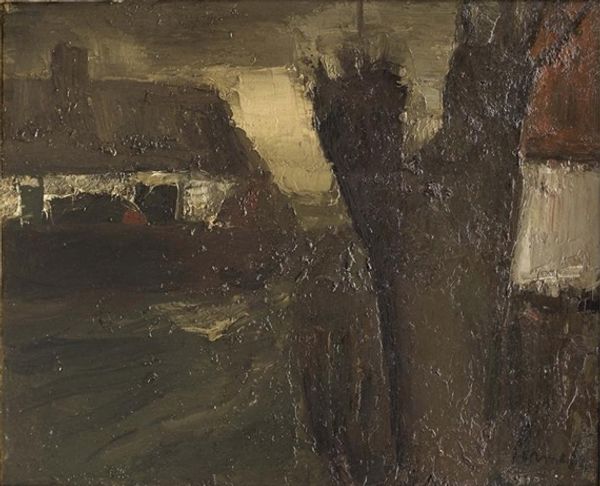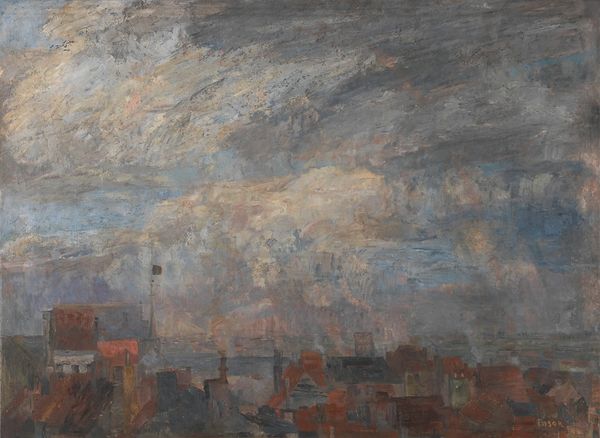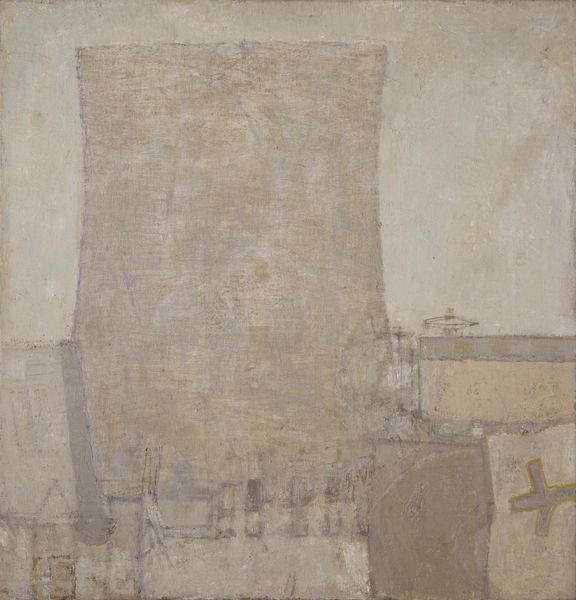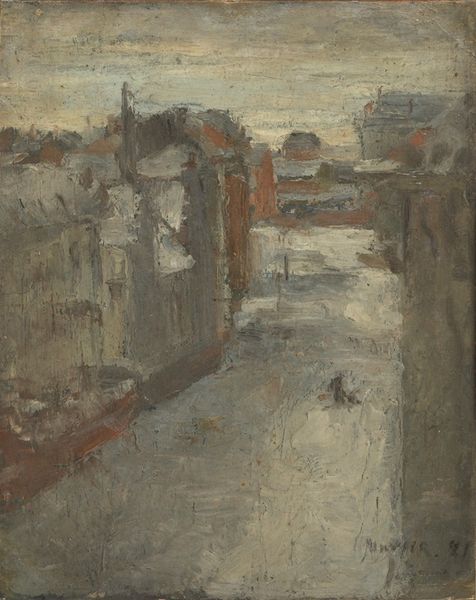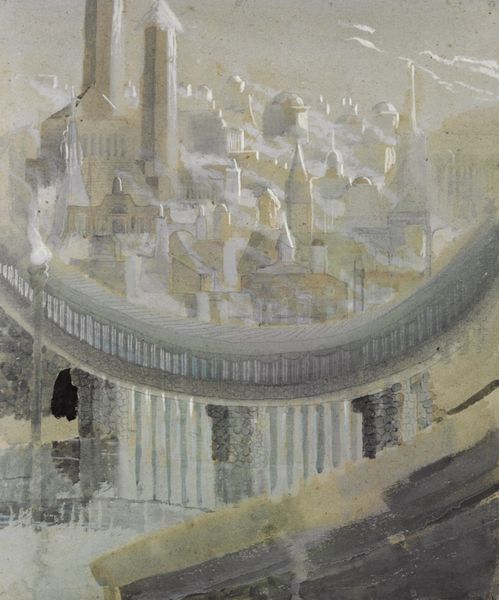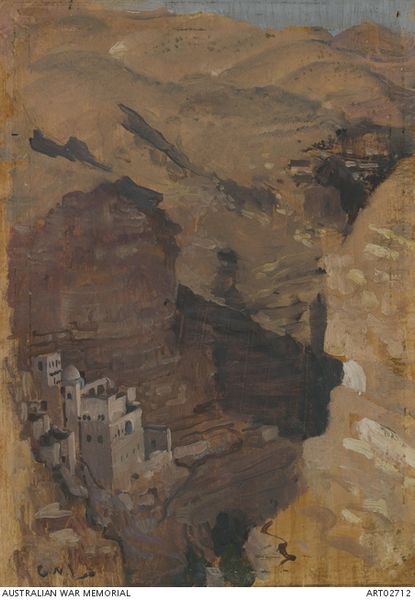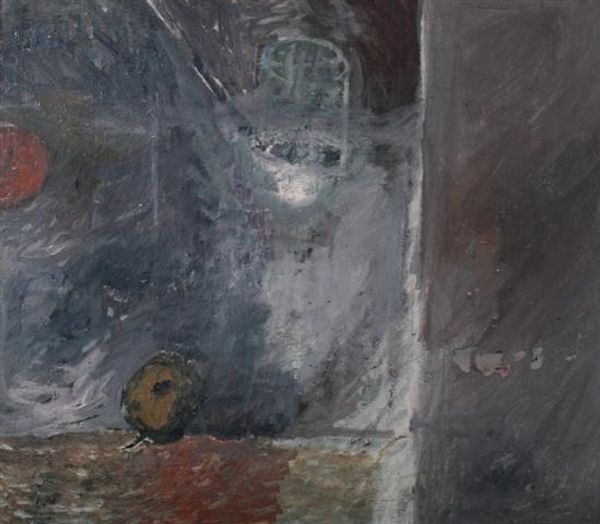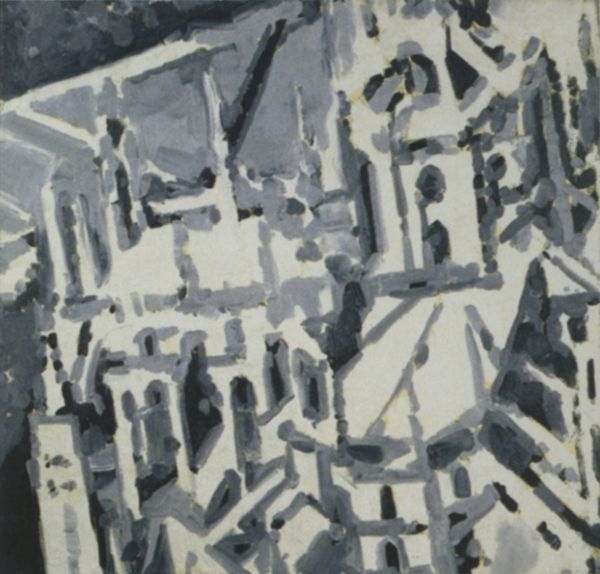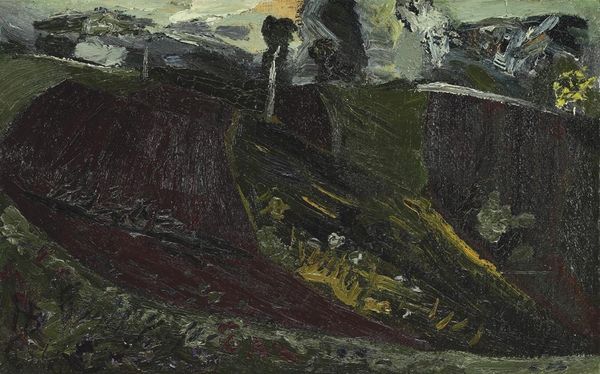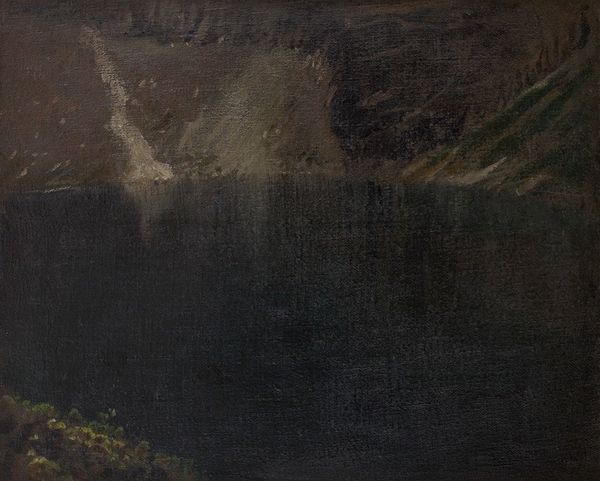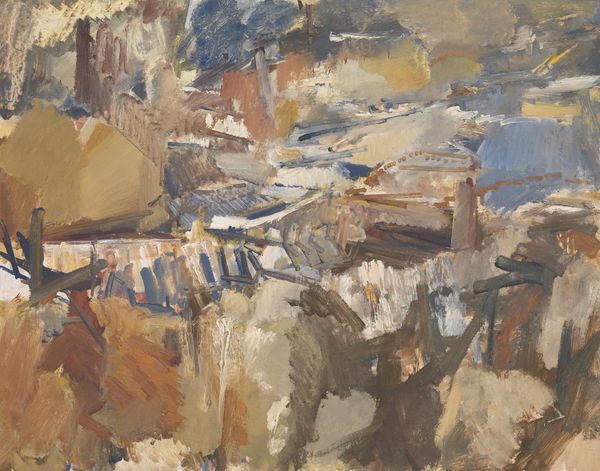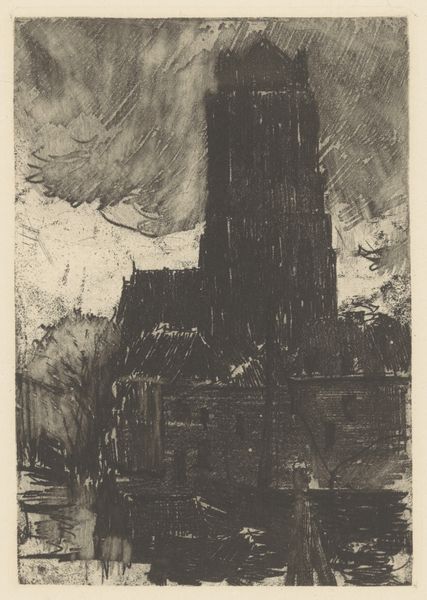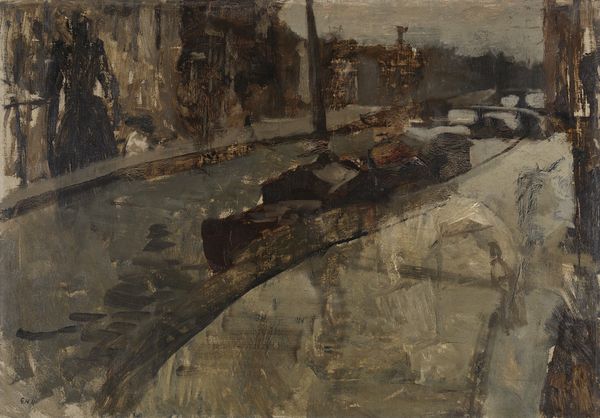
Copyright: Constantin Flondor,Fair Use
Curator: Welcome. We are standing before Constantin Flondor’s “Lutheran Church,” painted in 1954 using oil on some indeterminate support. What's your immediate impression? Editor: It's remarkably somber, wouldn't you say? The constrained palette lends a gravity to the subject, with the thick impasto further reinforcing a brooding atmosphere. Curator: Precisely. Observe the artist's construction—a series of layered planes articulated through the varying textures achieved with those rough brushstrokes you've described. There's an intriguing tension created between the represented subject, that being this city with the church tower and rooftops and the raw materiality of the paint itself. Editor: Agreed. Churches, historically and culturally, carry so much symbolic weight – serving as societal anchors, sites of both solace and judgement. The darkened tones Flondor employs here speak to a perhaps a questioning or a subversion of that stability? Is it a loss of faith depicted in those muted greys and greens? Curator: Interesting thought, but might it be simpler? We could view the image as merely Flondor grappling with form and texture, an essay into depicting urban space under a muted light without relying heavily on specific symbolic baggage. Consider the lack of sharp definition—shapes are implied more than explicitly defined. Editor: Maybe, but one cannot disregard the consistent appearance of sacred architecture in art history. They resonate. The spire, though somewhat diminished within this landscape, suggests humanity's reach toward the divine, yet here it’s overwhelmed. Curator: I am not arguing about that, the iconographic dimension can provide relevant keys to enter the work, yet I wonder if it is the main concern in Flondor’s artistic statement; what the surface reveals, through brushwork and color choices is the artist endeavor to approach reality. The work achieves something more. Editor: An atmospheric rendering of a cityscape which triggers both hope and resignation – not so dissimilar of our current era. This piece feels timeless even as it is dated. Curator: And to bring this back to formalism, such powerful emotion derived simply from interacting formal elements speaks to Flondor's command as an artist. Editor: Indeed, it speaks volumes. Thanks for highlighting those intrinsic aspects of this fascinating artwork, they brought a new appreciation.
Comments
No comments
Be the first to comment and join the conversation on the ultimate creative platform.
